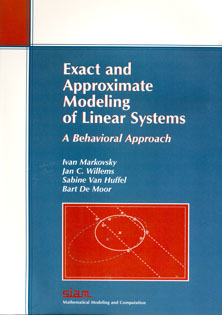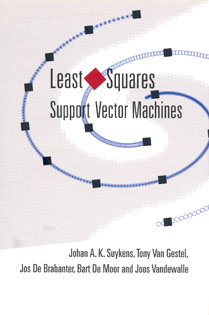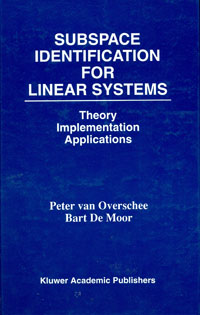
Exact and Approximate Modeling of Linear Systems
A Behavioral Approach
The aim of this book is to present and popularize the behavioral approach to mathematical modeling among theoreticians and practitioners. The framework we adopt applies to static as well as dynamic and to linear as well as nonlinear problems.
Synopsis
The behavioral approach, put forward in the three part paper by J. C.Willems [Wil87], includes a rigorous framework for deriving mathematical models, a field called system identification. By the mid 80’s there was a well developed stochastic theory for linear time-invariant system identification—the prediction error approach of L. Ljung—which has numerous “success stories.” Nevertheless, the rationale for using the stochastic framework, the question of what is meant by an optimal (approximate) model, and even more basically what is meant by a mathematical model remained to some extent unclear.
A synergy of the classical stochastic framework (linear system driven by white noise) and a key result of [Wil87] that shows how a state sequence of the system can be obtained directly from observed data led to the very successful subspace identification methods [VD96]. Now the subspace methods together with the prediction error methods are the classical approaches for system identification.
Another follow-up of [Wil87] is the global total least squares approach due to Roorda and Heij. In a remarkable paper [RH95], Roorda and Heij address an approximate identification problem truly in the behavioral framework, i.e., in a representation-free setting. Their results lead to practical algorithms that are similar in structure to the prediction error methods: double minimization problems, of which the inner minimization is a smoothing problem and the outer minimization is a nonlinear least squares problem.
Unfortunately, the global total least squares method has gained little attention in the system identification community and the algorithms of [RH95, Roo95] did not find their way to robust numerical implementation and consequently to practical applications.
The aim of this book is to present and popularize the behavioral approach to mathematical modeling among theoreticians and practitioners. The framework we adopt applies to static as well as dynamic and to linear as well as nonlinear problems. In the linear static case, the approximate modeling problem considered specializes to the total least squares method, which is classically viewed as a generalization of the least squares method to fitting problems Ax ≈ b, in which there are errors in both the vector b and the matrix A. In the quadratic static case, the behavioral approach leads to the orthogonal regression method for fitting data to ellipses. In the first part of the book we examine static approximation problems: weighted and structured total least squares problems and estimation of bilinear and quadratic models, and in the second part of the book we examine dynamic approximation problems: exact and approximate system identification. The exact identification problem falls in the field of subspace identification and the approximate identification problem is the global total least squares problem of Roorda and Heij.




